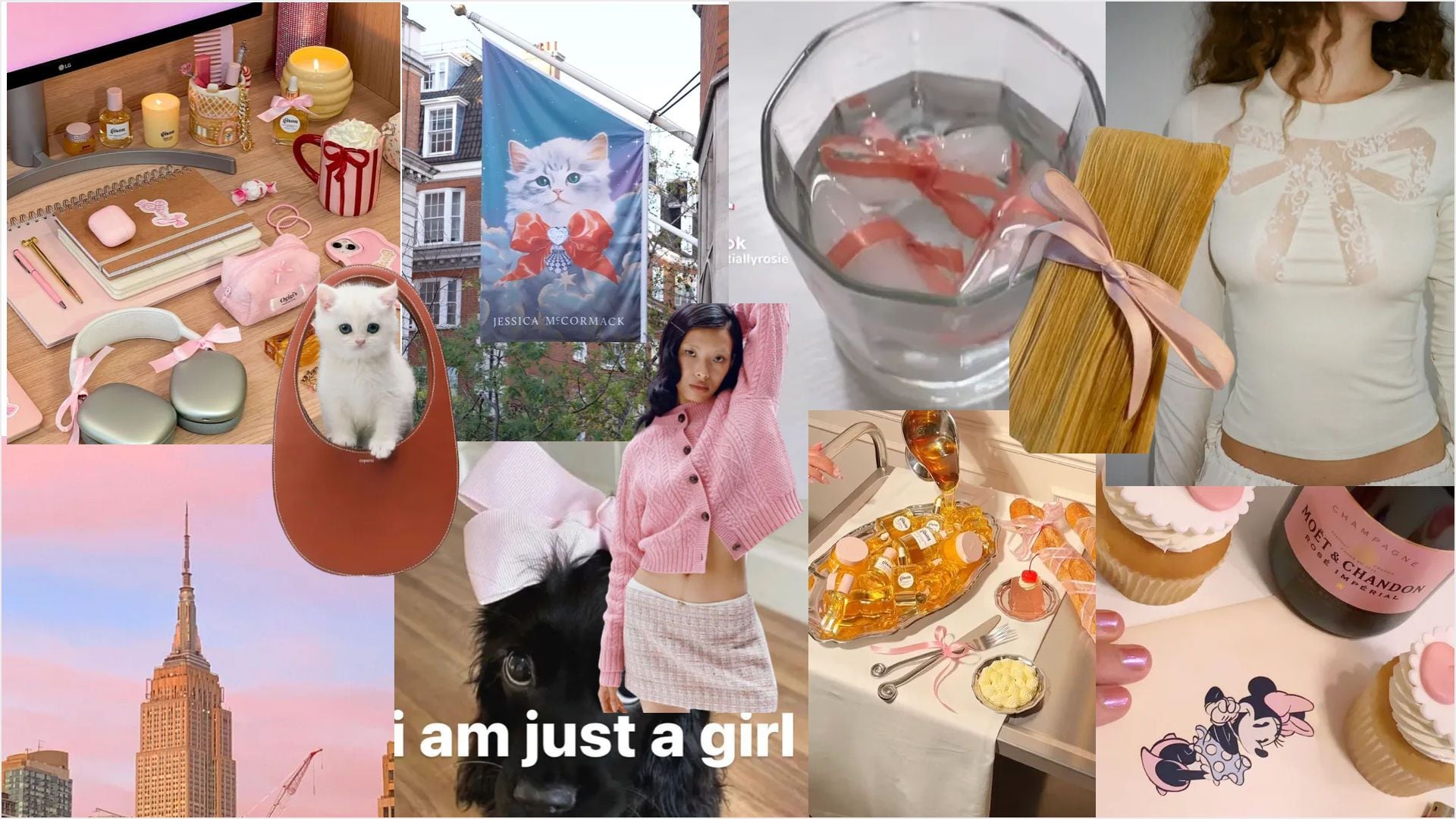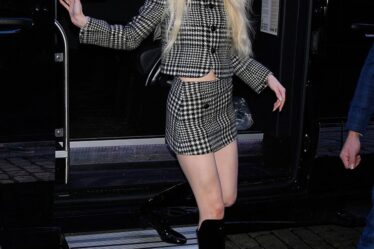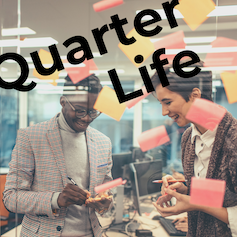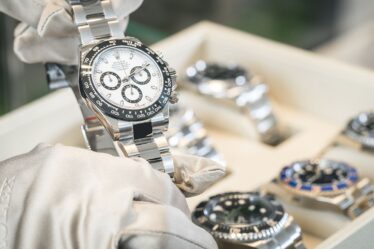
If memes are the lens through which we make sense, crystallise and eventually dispose of trends, then the images featuring an out-of-place bow that have proliferated across Instagram and TikTok in recent weeks show the coquette trend is already at boiling point.
Fashion is completely wrapped up in its bow obsession.
Bows feature in collections across the pricing spectrum, from designers like Simone Rocha and Miu Miu to contemporary brands such as Staud and Doen, all the way to mass market retailers including H&M and Shein. In November, Vogue declared “Bows are Back,” and when New York magazine’s The Cut dubbed 2023 as the “Year of the Girl,” the accompanying image featured a large pink bow. Earlier this month, Into the Gloss, Glossier’s editorial arm, showed just how far the bow love went with a round-up of bow-wrapped ice cubes, dumbbells, dried spaghetti noodles and a baby deer wearing bows as an accessory.
Bow mania is just one facet of the coquette trend, which is characterised by playful, whimsical and somewhat childlike motifs, such as bows, gingham print, heart shapes and soft pastels and has been brewing on TikTok for months; now, it’s fully broken into fashion’s mainstream.
What’s driving the rise of the coquette trend?
Some commentators see the coquette trend as a pushback against a unrelentingly negative news cycle, but also against what they perceive as feminism’s lack of real-world progress. Rian Phin, a fashion and culture critic, said that first noticed the trend in 2020, but sees today’s version as a consequence of a lack of a “globally interconnected” feminist movement.
“I think people are exhausted from the 2010s kind of feminism,” she said, referencing the “girl boss” era, which she said ultimately came to represent an aesthetic more than it did spur meaningful change. Meanwhile, women’s rights have taken a beating in recent years, most notably in the West with the repeal of the landmark Roe v. Wade ruling in the US in 2022. In September, the United Nations stated the “world is failing” women and girls in a new report.
The Atlantic’s associate editor Isabel Cristo dubbed it “woman in retrograde.” Caitlyn Clark, who writes the pop culture newsletter It’s Really That Deep, labelled the trend as “self-infantilisation” on TikTok, as women have “retreat[ed] into some of the oldest stereotypes about womanhood and femininity,” because they’ve given up the idea of change.
For others, it’s a reclaiming of the hyper-feminine on their own terms. Daise Bedolla, a freelance creative who works with Into The Gloss, said the trend is “quite literally” the bow on top of a year defined by girlhood, pointing to the blockbuster success of the Barbie movie and Taylor Swift’s record-setting Eras Tour.
It’s also a sign of how trends proliferate today: first, on social media, then into mainstream fashion. Gone are the days when, as Meryl Streep said in “The Devil Wears Prada,” trends are selected by a small group of editors in an ivory tower. Today, social media users dictate what’s next in fashion.
Of course, much of this nuance won’t matter to the shoppers searching for a cute, on-trend item.
“When concepts become a social media trend, it tends to get distilled so much that a lot of people don’t really know what the original art is about,” said Hanako Maeda, founder and chief executive of fashion label Adeam, which featured bows in its Spring/Summer 2024 collection.
How is fashion participating — and benefitting?
The trend may have taken off on TikTok, but it’s made its way to the runway thanks to designers like Sandy Liang and Simone Rocha. Liang, one of fashion’s first bow devotees, routinely releases collections that include ribbon-trimmed socks, table runners and hair clips — a moodboard posted to the brand’s Instagram account shows stills from Sofia Coppola’s very girly Marie Antoinette.
The author has shared a Flourish data chart.You will need to accept and consent to the use of cookies and similar technologies by our third-party partners (including: YouTube, Instagram or Twitter), in order to view embedded content in this article and others you may visit in future.
But it’s not just bows: Mary Jane shoes, Peter Pan collared shirts and floaty chiffon layers have also benefited from the coquette trend’s popularity. Brands are also embracing the hints of traditional-yet-playful femininity in their ads and special offers: Parisian fashion label Coperni’s holiday campaign features fluffy kittens next to purses and shoes, New Zealand-born jewellery designer Jessica McCormack’s London store is flying a flag featuring a white kitten wearing a diamond-studded pink bow, while hair care line Gisou is selling a pink bow and dimanté emblazoned pouch for the holidays.
It’s also not just fashion – coquette’s tacit youthfulness manifested in short-lived beauty fads this summer: “tomato girl” and “strawberry girl” makeup, both of which featured flushed cheeks, freckles on the skin and an outdoorsy glow.
Maeda pointed out that the trend has deeper roots in parts of Asia, citing its longer-running popularity with K-Pop stars. Adeam’s Spring/Summer 2024 collection took a cue from the “ballet core,” trend with Maeda taking inspiration from the New York City ballet. For her, the idea is to play with softness and strength.
“Ballet is also a sport in a sense, because in order to perform those very intricate moves, you need a lot of athletic prowess,” she said. “I love playing with dualities and like concepts that seem almost like opposites.”
What’s more, when fashion brands add a bow to their wares, they add to their bottom line. Research from retail data platform Edited shows that bow-adorned T-shirts from luxury brands such as Miu Miu and Jacquemus are six to ten percent more expensive than logo versions. However, Edited analyst Kayla Marci pointed out that mass market brands have yet to realise the value of the bow, with bow-topped ballet flats and accessories from Zara and Stradivarius being cheaper than those without, saying that mass market retailers haven’t realised the value of this particular detail yet.
Perhaps it’s fashion’s version of the “lipstick effect”, which sees shoppers turn to beauty in times of economic downturn. In the face of turmoil, rejection and unrest, we want to explore playfulness and levity again as we dress, said beauty writer Tynan Sinks.
“Growing up queer in the Midwest, there’s a thing of, ‘you can’t be a boy and wear pink’,” he said. Now, he’s reclaimed it: “I’m always gonna make the joke at my expense before you can,” he said.
Diana Pearl and Joan Kennedy contributed reporting.



